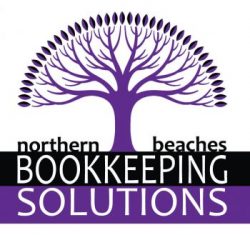Simpler BAS Lodgement for Small Business – Save Time and Stay Compliant
Lodging Business Activity Statements (BAS) is a key responsibility for small businesses, but the process can be time-consuming and complex. The Australian Taxation Office (ATO) introduced the Simpler BAS system to streamline BAS reporting and reduce the reporting burden for small businesses. Here’s how to use Simpler BAS to lodge your BAS quickly and accurately.
What Is Simpler BAS?
Simpler BAS is a streamlined reporting method designed to simplify BAS lodgement for small businesses with an annual turnover of less than $10 million. Under Simpler BAS, businesses only need to report:
- 1A – GST on Sales
- 1B – GST on Purchases
- G1 – Total Sales
This means fewer reporting labels and less paperwork, making it easier to lodge BAS accurately and on time.
Benefits of Simpler BAS for Small Businesses
The Simpler BAS system offers several benefits for small businesses, including:
- Less Paperwork: Only three key GST labels to report, reducing the amount of data entry.
- Time Savings: Streamlined reporting means less time spent on BAS preparation and lodgement.
- Reduced Errors: Fewer reporting labels minimise the risk of mistakes and potential ATO penalties.
- Improved Cash Flow: Easier reporting helps businesses stay on top of GST obligations and avoid unexpected liabilities.
Who Is Eligible for Simpler BAS?
The Simpler BAS system is available to small businesses with an annual turnover of less than $10 million. This includes sole traders, partnerships, companies, and trusts registered for GST. Eligible businesses are automatically transitioned to Simpler BAS by the ATO and notified via MyGov or business mail.
How to Lodge Simpler BAS – Step-by-Step
Follow these steps to lodge Simpler BAS for your business:
- 1. Collect Financial Data: Gather sales, purchase, and GST data for the BAS period. Ensure all transactions are recorded accurately in your accounting software.
- 2. Calculate GST on Sales (1A): Sum up the GST collected on sales during the reporting period. Include GST from all taxable sales, excluding GST-free sales.
- 3. Calculate GST on Purchases (1B): Calculate the GST paid on business-related purchases. This includes GST on goods, services, and expenses.
- 4. Calculate Total Sales (G1): Enter the total sales amount, including GST. Ensure that GST-free and input-taxed sales are also included in the total.
- 5. Lodge BAS via ATO Online Services: Log in to the ATO’s online services for business or use your accounting software to lodge the BAS report.
- 6. Pay GST Liability: If the GST on sales (1A) exceeds the GST on purchases (1B), pay the net GST amount to the ATO. If 1B exceeds 1A, you may be eligible for a GST refund.
Common Mistakes to Avoid When Lodging Simpler BAS
To avoid errors and potential penalties, watch out for these common BAS mistakes:
- Incorrectly categorising GST-free sales as taxable sales
- Forgetting to include GST on purchases that are partially used for private purposes
- Failing to reconcile BAS data with bank statements and accounting records
- Omitting income from other business activities, such as asset sales or interest income
How Accounting Software Can Simplify BAS Lodgement
Using accounting software like Xero, MYOB, or QuickBooks can streamline the BAS lodgement process by automating calculations, generating reports, and tracking GST obligations in real time. These platforms also integrate with the ATO for direct BAS lodgement, reducing manual data entry and minimising errors.
Need Help With BAS Lodgement?
Navigating BAS lodgement can be complex, especially if you’re new to the Simpler BAS system. Northern Beaches Bookkeeping Solutions provides expert BAS services to ensure accurate reporting, timely lodgement, and ATO compliance. Contact us today for stress-free BAS management and bookkeeping support.
